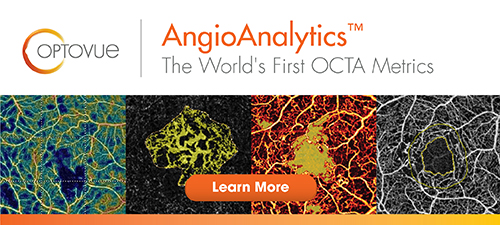
Volume 18, Number 26 |
Monday, June 25, 2018 |
|
JUNE IS HEALTHY VISION MONTH |
|
||||
|
Evaluation of Multispectral Imaging in Diagnosing Diabetic Retinopathy Scientists assessed multispectral imaging as a novel diagnostic approach for diabetic retinopathy in clinical settings.
|
|
| Li L, Zhang P, Liu H, et al. Evaluation of multispectral imaging in diagnosing diabetic retinopathy. Retina 2018; Jun 12. [Epub ahead of print]. |  |
|
Macular & ONH Vessel Density and Progressive RNFL Loss in Glaucoma Researchers investigated the relationship between macular and peripapillary vessel density and progressive retinal nerve fiber layer loss in individuals with mild to moderate primary open-angle glaucoma, as part of a prospective, observational study. They included 132 eyes of 83 individuals with glaucoma followed for at least two years (average: 27.3 ±3.36 months).
|
|
| Moghimi S, Zangwill LM, Penteado RC, et al. Macular and optic nerve head vessel density and progressive retinal nerve fiber layer loss in glaucoma. Ophthalmology 2018; Jun 12. [Epub ahead of print]. |  |

|
|
 |
|
Review of Ophthalmology® Online is published by the Review Group, a Division of Jobson Medical Information LLC (JMI), 11 Campus Boulevard, Newtown Square, PA 19073. To subscribe to other JMI newsletters or to manage your subscription, click here. To change your email address, reply to this email. Write "change of address" in the subject line. Make sure to provide us with your old and new address. To ensure delivery, please be sure to add reviewophth@jobsonmail.com to your address book or safe senders list. Click here if you do not want to receive future emails from Review of Ophthalmology Online. Advertising: For information on advertising in this e-mail newsletter or other creative advertising opportunities with Review of Ophthalmology, please contact sales managers James Henne or Michele Barrett. News: To submit news or contact the editor, send an e-mail, or FAX your news to 610.492.1049 |


